Learn how to measure flour without a scale with this step-by-step guide. Avoid common mistakes by learning to measure flour accurately for all your baking projects.
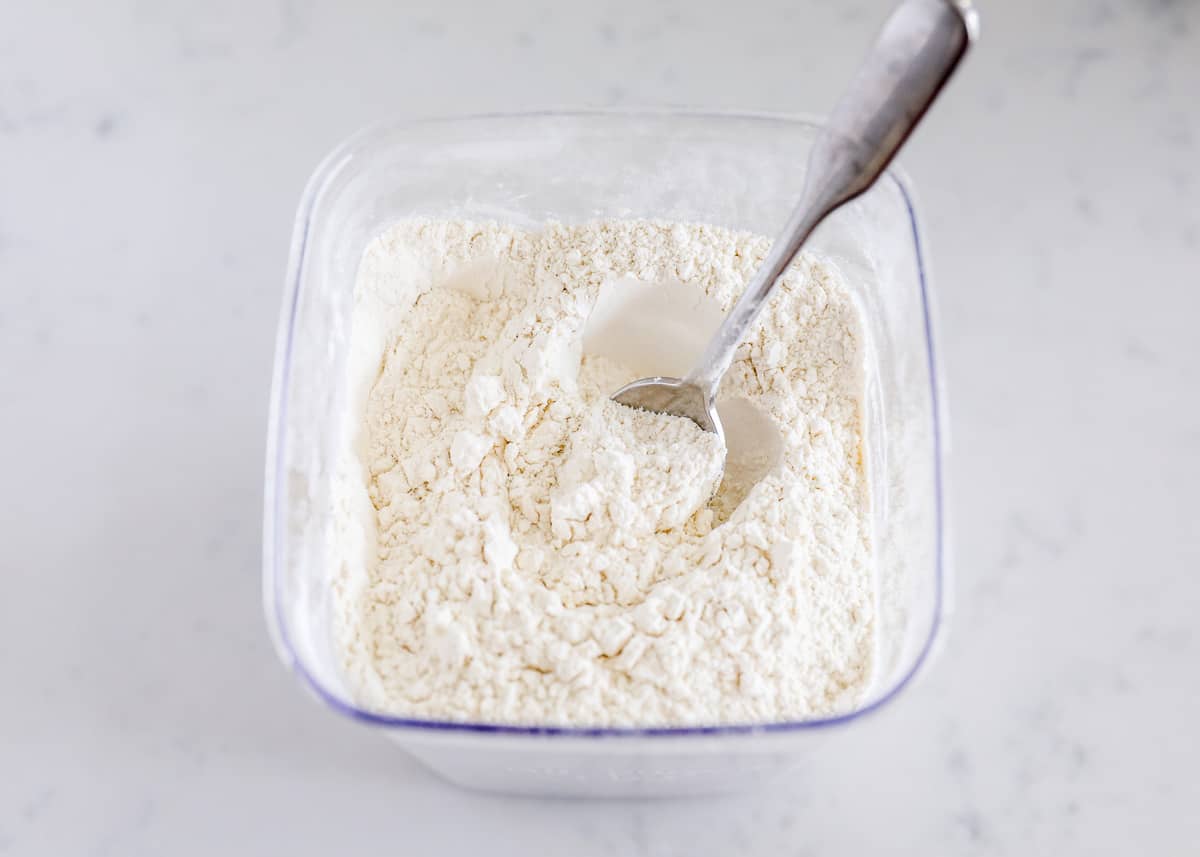
This post may contain affiliate links. Read disclosure policy.
Table of Contents
Measuring Flour for Beginners
Learning how to measure flour accurately is crucial to baking success as even a small variation in flour quantity can take what was supposed to be a moist and tender baked good a dry and dense one. It’s a common problem, but it’s easier than you think to achieve precise measurements even without a scale using the right techniques!
When our cakes, chocolate chip cookies, pie crust, or homemade bread don’t turn out as we expected, we quickly realize how important the amount of flour is when it comes to baking.
This all too common problem of having dense, heavy, or dry results to what should have been a perfect recipe, can become a non-issue once and for all with my simple, easy-to-follow guide on measuring flour the right way with no kitchen scale needed!
Why Accurate Measurement in Baking is Important
As mentioned above, baking isn’t as fluid as cooking can be. There is a science to baking, meaning that exact measurements matter when making a baking recipe from scratch such as homemade French bread.
Using too little or too much flour can make a big difference in texture and leave you with baked goods that are dense, dry, crumbly or just downright different than the recipe intended. So that’s why measuring flour correctly is so important in order to achieve the absolute perfect texture!
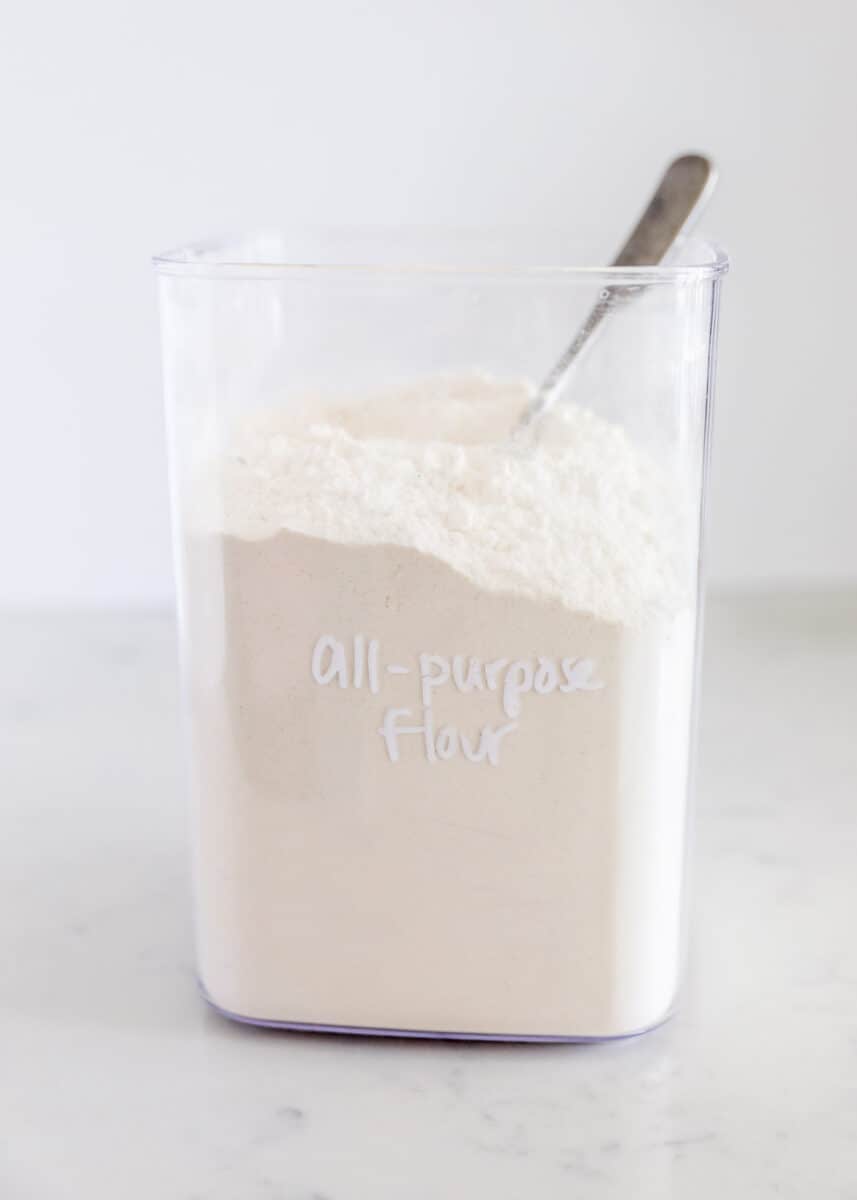
Equipment Needed
- Measuring Cups: A complete set. This should include 1 cup, 1/2 cup, 1/3 cup, and a 1/4 cup.
- Measuring Spoons: A full set of measuring spoons will include 1 Tbsp, 1 tsp, 1/2 tsp, 1/4 tsp, and 1/8 tsp. If you’re lucky you may find a set that includes 1/2 Tbsp.
Type of Measurement Cups
Measuring cups are different for wet and dry ingredients? Generally, measuring wet ingredients is done in glass measuring cups with a spout for easing pouring. Dry ingredients have no spout which makes it easier to level and spoon. Using the right one can make all the difference!
How to Measure Flour Without a Scale
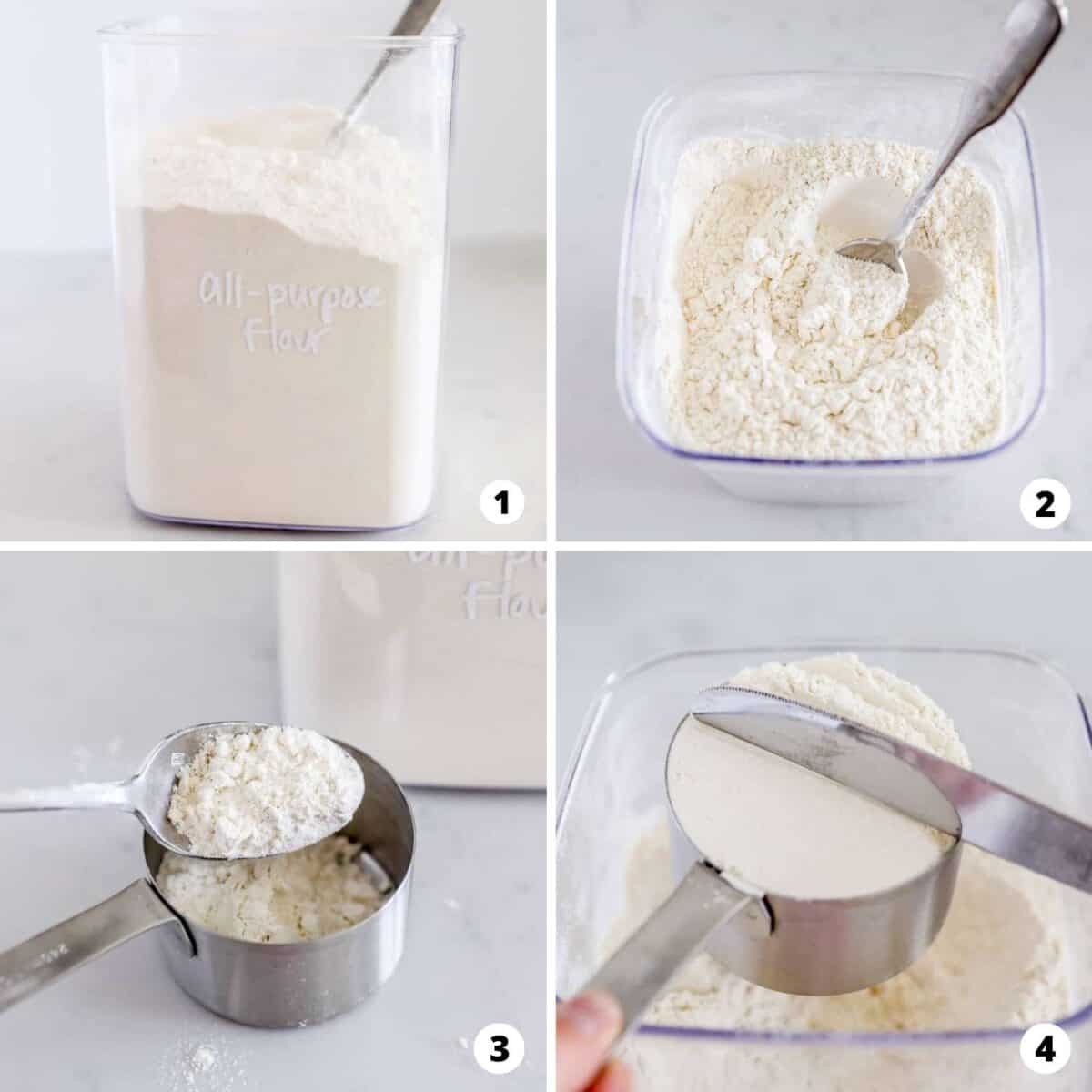
- Stir flour: Make sure to stir the jar of flour before beginning to measure. The reason for this is the flour isn’t meant to be packed down when it’s measured.
- Fluffing. Fluffing allows any settled flour to look alive again so that it can be light and airy when it’s measured properly.
- Spoon: Spoon the flour into the measuring cup. Again, this is so that you’re not measuring packed flour. When you scoop it right out of the container with a measuring cup, you’re packing in more than is required. Spooning the flour means leaving the measuring cup out of the container, and using a spoon to place the flour in the measuring cup bit by bit.
- Level. Then, you use the back of a knife to level it off at the top of the cup, getting rid of any excess flour.
Measuring Shortcut
If you do not have a spoon and knife or are in a rush, you can scoop the flour but make sure to shake off about 1/8″ of the flour from the top back into the jar. This is not as accurate but this way works well in a pinch.
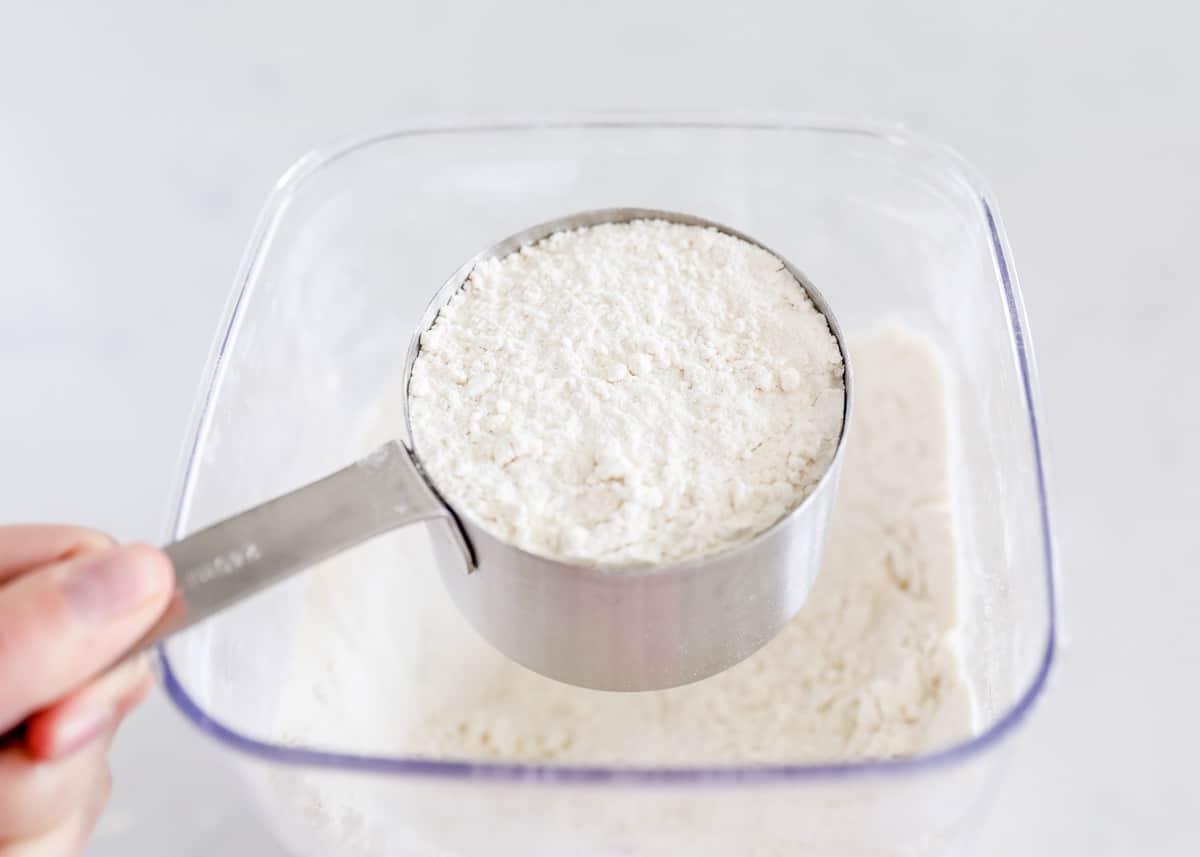
Measurement Conversions
Keep this free printable kitchen conversion chart in your cupboard or on your fridge for quick easy access to measurement conversions, for both wet and dry ingredients. These are some of the most useful kitchen tips because even the most experienced bakers need a reminder sometimes!
FAQs
This can get a bit tricky, and it’s actually dependent on the wording in the recipe. 1 Cup of sifted flour is not the same as 1 Cup of flour, sifted. The first means you should sift the flour before measuring and the second means you sift it after. Just be mindful of that!
Outside of that, you don’t need to do any sifting unless the recipe specifically says to.
No. And here’s why. Many recipes call for measuring packed sugar. What that means is it’s packed tightly into the measuring cup, removing any excess air, to make enough room for as much as possible. Then it is leveled off and used. This is because that amount of sugar is used in that particular recipe.
Generally, bakers have an understanding that the flour measurements are never meant to be packed, so if you try and pack it down to make as much fit in the cup as possible, you’ll be using much more flour than you need, therefore altering the results of your baking.
For the most part, yes! Most of the popular varieties such as all-purpose flour, bread flour and whole wheat flour are similar in weight and density, in which case the spoon and level method will work great.
Flours that are more light or dense than the average might be worth measuring with a scale. Although you could always test out the spoon and level technique first to see if you achieve the same results.
Using a digital scale to weigh the flour will be most accurate (more tips on that below) because there’s no guessing involved. It gives you an exact measurement in grams or ounces.
Although I have a kitchen scale and pull it out from time to time, I’ve had great results using the spoon and level technique and tend to turn to this method more often.
How to Measure Flour Using a Scale
A digital scale is the most accurate way to measure the weight and volume of any dry or liquid ingredient. Having one will come in handy for measuring many things so it’s definitely worth the investment.
The type of kitchen scale you get doesn’t need to be fancy. Any standard scale will do. It’ll make life so much easier not having to use measuring cups at all!
- Turn on the scale, place your empty mixing bowl on the scale, and set it to “0” (zero). This tells the scale to no longer account for the weight of the bowl.
- Add flour directly into the mixing bowl until the scale reads the amount of flour you need! Easy peasy.
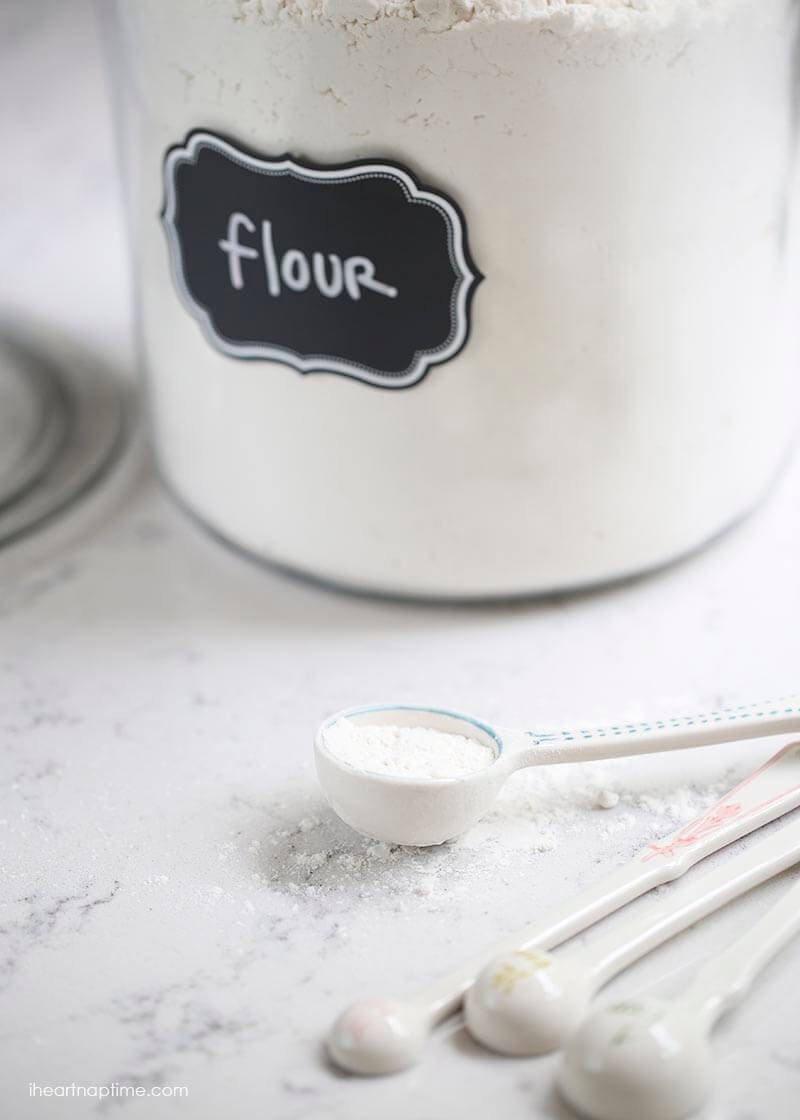
More Baking Recipes You’ll Love
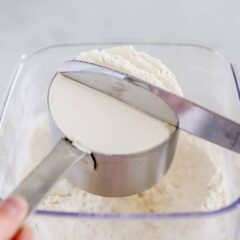
How to Measure Flour
Equipment
- Measuring cups for dry ingredients
- Measuring spoons for dry ingredients
- Digital scale, , optional
Ingredients
- 1 cup Flour , any type
Instructions
How to Measure Flour by Hand
- Stir the jar of flour to get rid of any settling and make the flour light and airy for proper measuring.
- Holding the measuring cup out of the jar, use a spoon to scoop the flour into the measuring cup. Once full, take the back of a knife and level the top of the cup off, getting rid of any excess flour.
How to Measure Flour with a Scale
- Turn on the scale, place your empty mixing bowl on the scale, and set it to “0” (zero) or Tare. This tells the scale to no longer account for the weight of the bowl.
- Scoop flour directly into the mixing bowl until the scale reads the amount of flour needed.
- Then add to the recipe you are using as instructed in the recipe.
Last step: Please leave a comment and rating after you make the recipe.
Notes
Nutrition
Nutrition provided is an estimate. It will vary based on specific ingredients used.


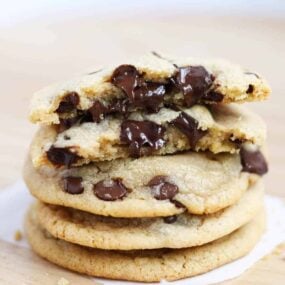
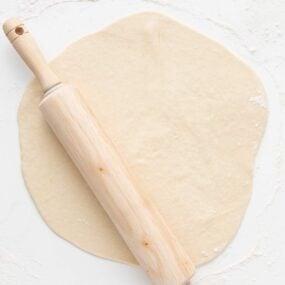
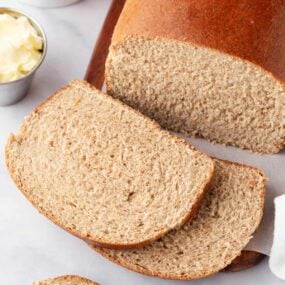
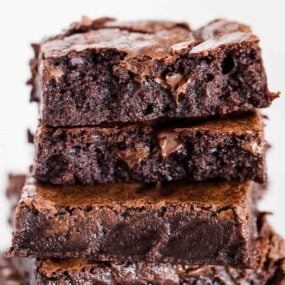
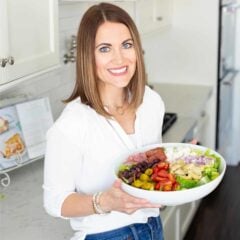
Jan Mitchell
What does a cup of flour weigh?
Jamielyn Nye
About 130 grams :)